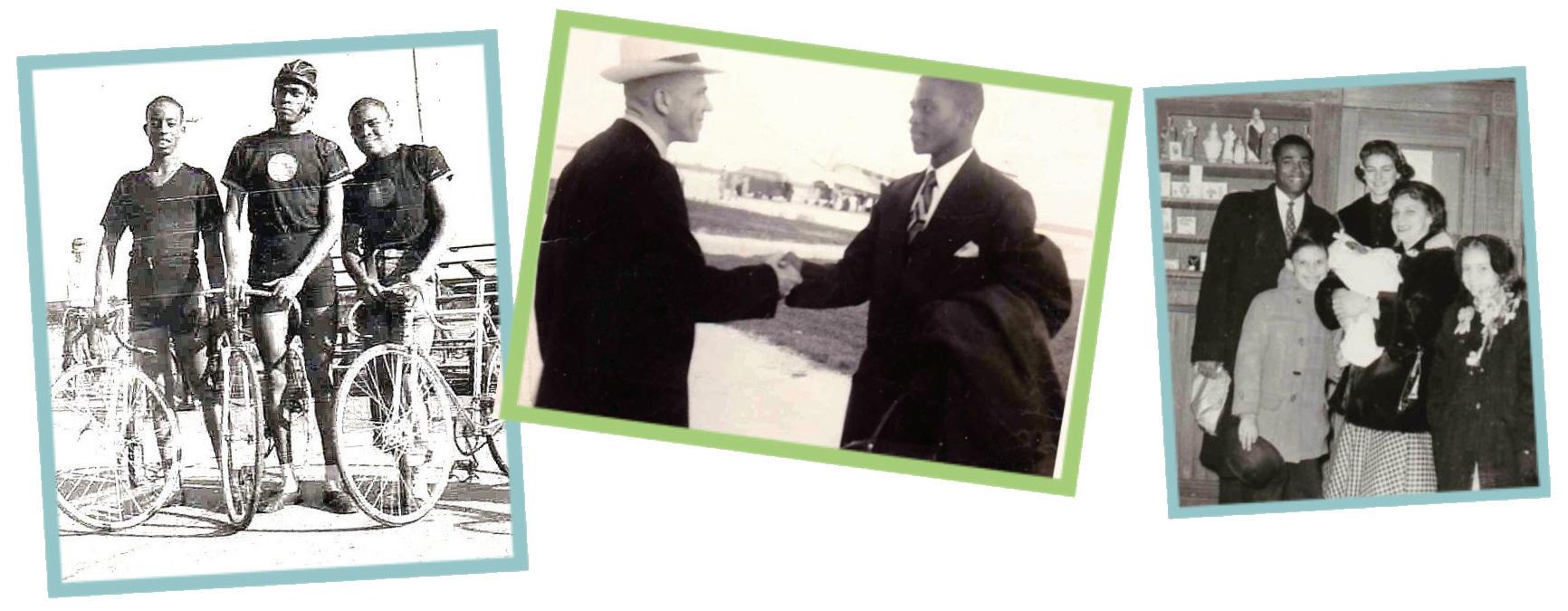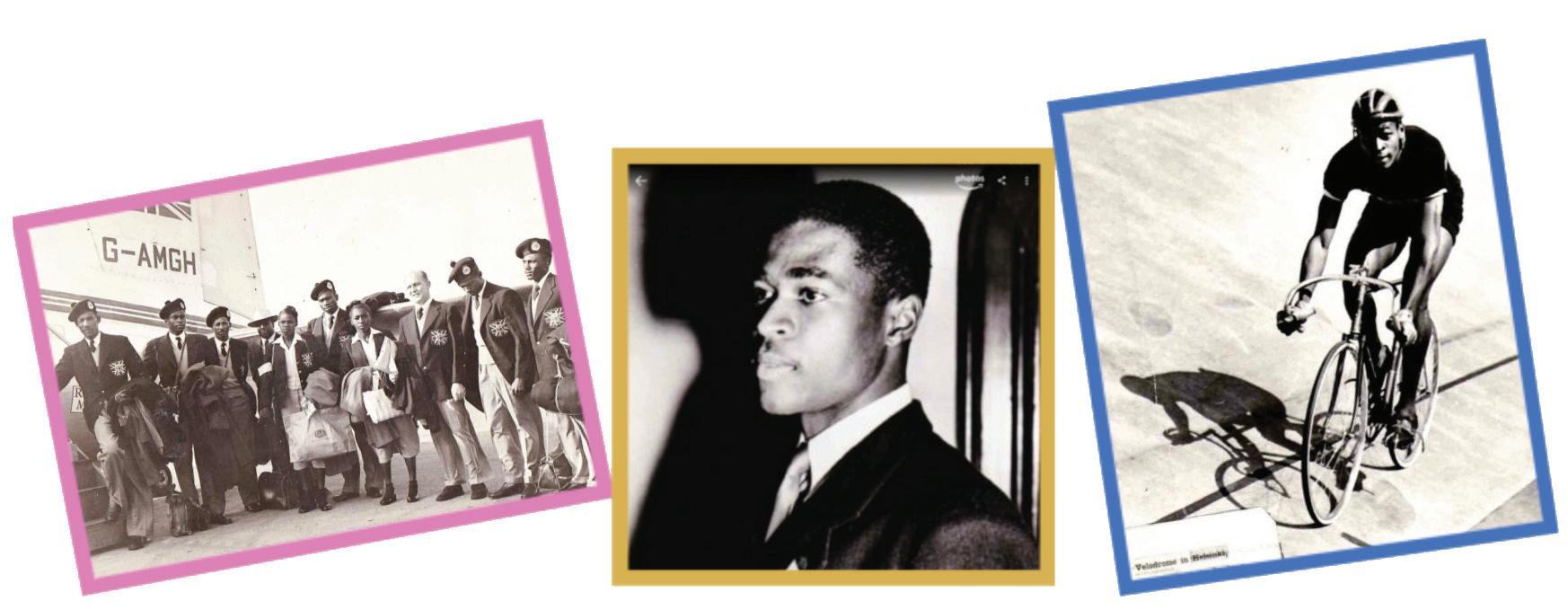
6 minute read
Ken Farnum Barbados’ First Olympian
Ken Farnum
BARBADOS’ FIRST OLYMPIAN Cycling Champion Known and Unknown
Advertisement
Kenneth Aubrey Farnum died in the midst of the pandemic. The frenzied emotions and chatter of the pandemic on every Barbadian who died, from Covid-19 or not, notwithstanding, the question was, Who? Who is Ken Farnum? Which was met by the terse response: You kidding? You don’t know who Ken Farnum is?
Every Barbadian of a certain age still speaks with reverence about Ken Farnum.
The mention of his name evokes the kind of emotion and spontaneous praise reserved for idols.
Which is unsurprising, because he was exactly that – the idol of a generation of Barbadians who followed his every success at home and abroad.
And successes, there were many of them.
Somehow, the name and exploits of Farnum faded with time. But his passing has led to renewed interest in his sporting success and a desire to give him his due place in Barbados’ history.
Before the heyday of cricket, and the exploits of the now Rt. Excellent Gary Sobers and his band of warriors, there was Kenneth Aubrey “Ken” Farnum and cycling.
Farnum dominated the sport. But more than that, he brought something special, different. It was not just the physique; he had that panache that turns a sport from something a segment of the population likes into a national fascination with a countrywide cheering squad.
He was the game changer. The difference? Farnum remained quiet and modest. And since cycling, outside the Tour de France, and sprint cycling, has not come anywhere to matching the popularity of other sports, despite being one of five disciplines at the Olympics since inception; and certainly not made inroads against cricket and other disciplines in Barbados, too many generations are unaware of Farnum’s singular achievements in the sport.
Born on 18 January 1931, he began racing at age 10. While still in his teens at school, he became the “A” class champion, developing his skill in pack races on circuits laid out on cricket fields.
A sprint cyclist, he grew to a little over six feet tall and a trim 180 pounds. Tactical savvy and a capacity for powering big gears earned him victories in Barbados and in venues around the Caribbean, including Jamaica, Trinidad and Guyana.
Virtually unbeaten in sprint events, he collected eight West Indies sprint titles, dominating the local and regional cycling scene.
The newspaper headlines captured the sporting hero of the day:
Farnum Wins International Championship at Two-day Meet
Farnum Rides Unbeaten – that was the report for a Whit Monday event in which he won the half mile, 2 mile and 9 mile events, setting two records before “a mammoth” crowd.
Farnum Wins Only Open Event – Overcomes Heavy Tract to Outstay
Belille – that about a six-mile event in Guyana.
Ken Farnum Rides Unbeaten In Annual Inter-Club Sports
In 1952, the Barbados cycling community wanted Farnum to compete at the Olympic Games in Helsinki, Finland, but Barbados had no Olympic organisation and was not a member of the International Olympic Committee, (IOC).
Supporters discovered an avenue that allowed him to compete as a member of the Jamaica team. The public-driven Farnum to Finland Fund and Government support made the trip possible, so at 21, young Ken Farnum found himself in Helsinki at the 1956 Olympic Games.
He vividly recalled that he was awed


seeing a cycling velodrome for the very first time. With his bicycle damaged while training during a stopover in Britain, he was lucky to borrow a pair of pedals from the British cycling team, but the banked velodrome proved a challenge as he was accustomed to riding on a flat surface.
Farnum competed in the 1000m time trial, an Olympic event that, at that time, had not yet been introduced to the Caribbean. He placed 20th out of 38 riders. He also competed in his pet event, a match sprint, placing 21st out of 33 riders. But the fact that he had never ridden in that environment before won him praise from the international Olympic cycling fraternity.
After the Olympics, the former Combermerian, who worked at the communications company, Cable and Wireless, moved to New York City where he continued to work in communications – and continued riding and racing.
It was a different country, but same Farnum dominance.
A headline in a New York newspaper, written by one Henry Isola, announced the arrival of the conquering cyclist thus:
Seubert Dethroned at Flushing Meadows – Farnum Captures State Bike Title
Isola, calling Farnum “the Negro Ace”, said that he “covered himself in glory in an upset win” in the New York State Bicycle Racing Championships.
At the time, Farnum who arrived in New York in May 1955, had only been in the country two months – and rode on a borrowed bike.
In all, Farnum won three consecutive New York state cycling championships, from 1955-57. He was the first cyclist of color to win major events in the United States since Major Taylor at the turn of the 20th century. It was also reported that competing against Herbie Francis inspired Francis to become the first African-American to make a US Olympic cycling team.
At the time, cycling was one of the biggest sports in the USA, with thousands, including all kinds of celebrities, attending six-day bicycle races. Because of the sport’s popularity, Farnum’s exploits, in a sport with few black participants, generated pandemonium and pride, especially among the black community in New York. As in Barbados, the community followed his every race, celebrating his victories with quiet pride.
“He definitely was a folk hero,” said Butch Martin, a two-time Olympian and a Hall of Famer. “If you think of the sport in the 1950s, kicking some white guy’s ass was a big deal. Farnum could do that. He had a big following.”
Farnum was on course to go to the 1960 Olympics. But while competing in the US National Championships, he took a nasty spill in the very first race in what was characterized as “criminal intent” by a competitor.
Thereafter, he retired from the sport and focused his energies on his family, raising two children, Ken Junior and Judy, with his wife, Judith. They were married on October 20, 1954 – Mrs. Farnum is still alive.
In 2012, Farnum was a featured guest at the Barbados Olympic Association’s 50th anniversary celebration and donated a collection of paraphernalia to the organisation.
He is featured in The Hearts of Li-
ons: The history of American Bicycle
Racing, by Peter Nye, a writer and board member of the US Cycling Hall of Fame.
Ken Farnum, Barbados’ first Olympian, died from complications brought on by COVID-19, on April 4, 2020 at age 89.
A Celebration of Life Mass of Remembrance was held on January 18 at Our Lady of Assumption-St. Mary Star of the Sea in the Bronx.
Farnum’s passing has ignited interest in who he was and his sporting prowess. He was featured in the New York Consulate General’s Black History Month and the Old Scholars of his alma mater, Combermere, are planning to install a memorial plaque at the school.
Hopefully more will be done to spread the story of Ken Farnum, the cycling icon and folk hero of the 1940s, 50s and early 60s and the man, from Peterkin, Bank Hall, St. Michael, all agree was “the very best of his time”.










